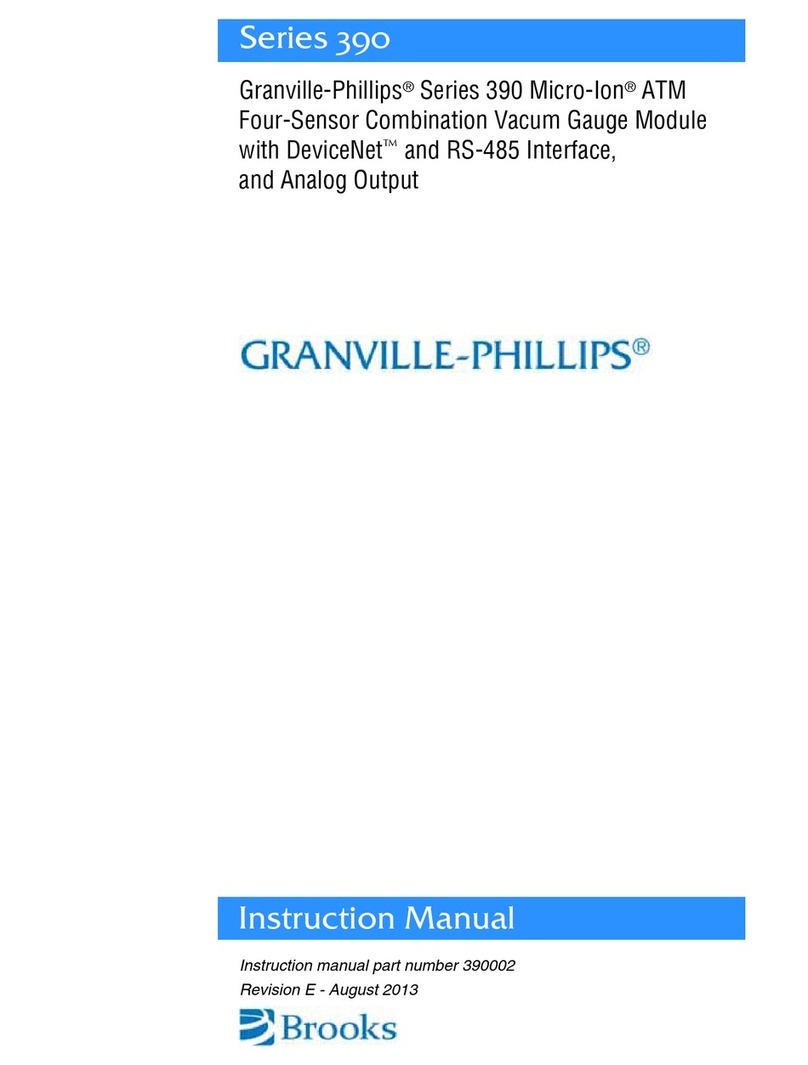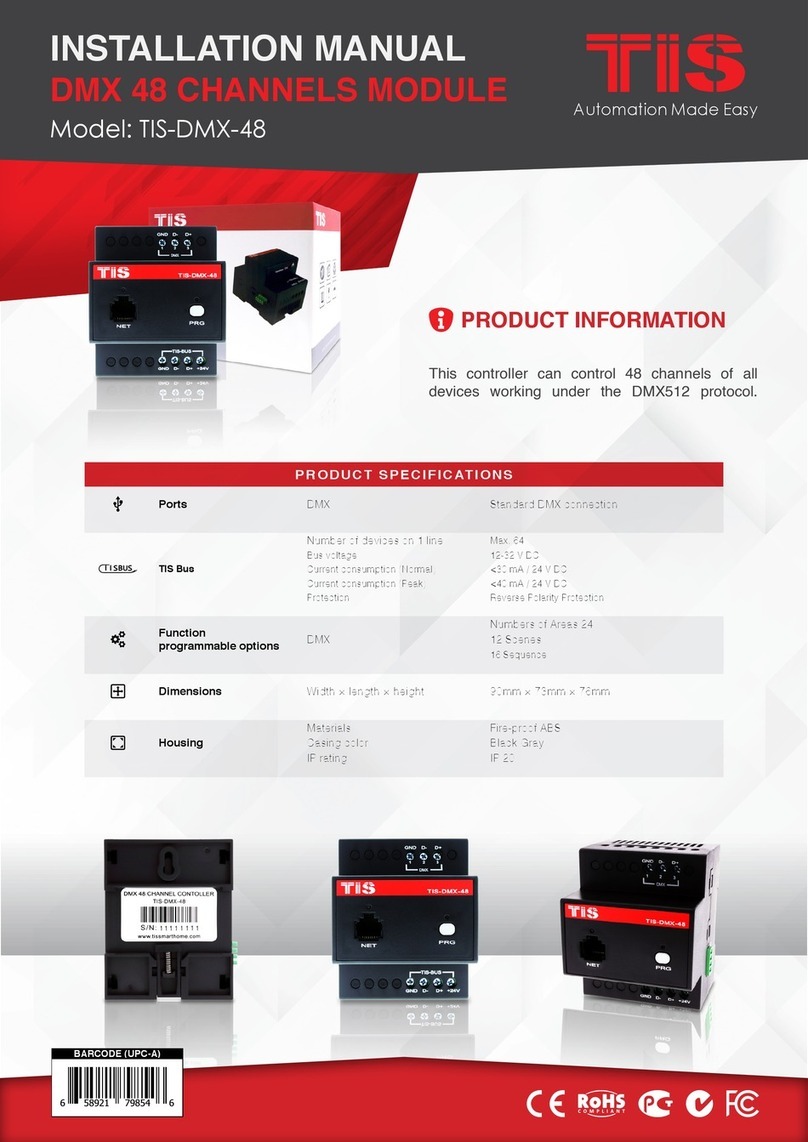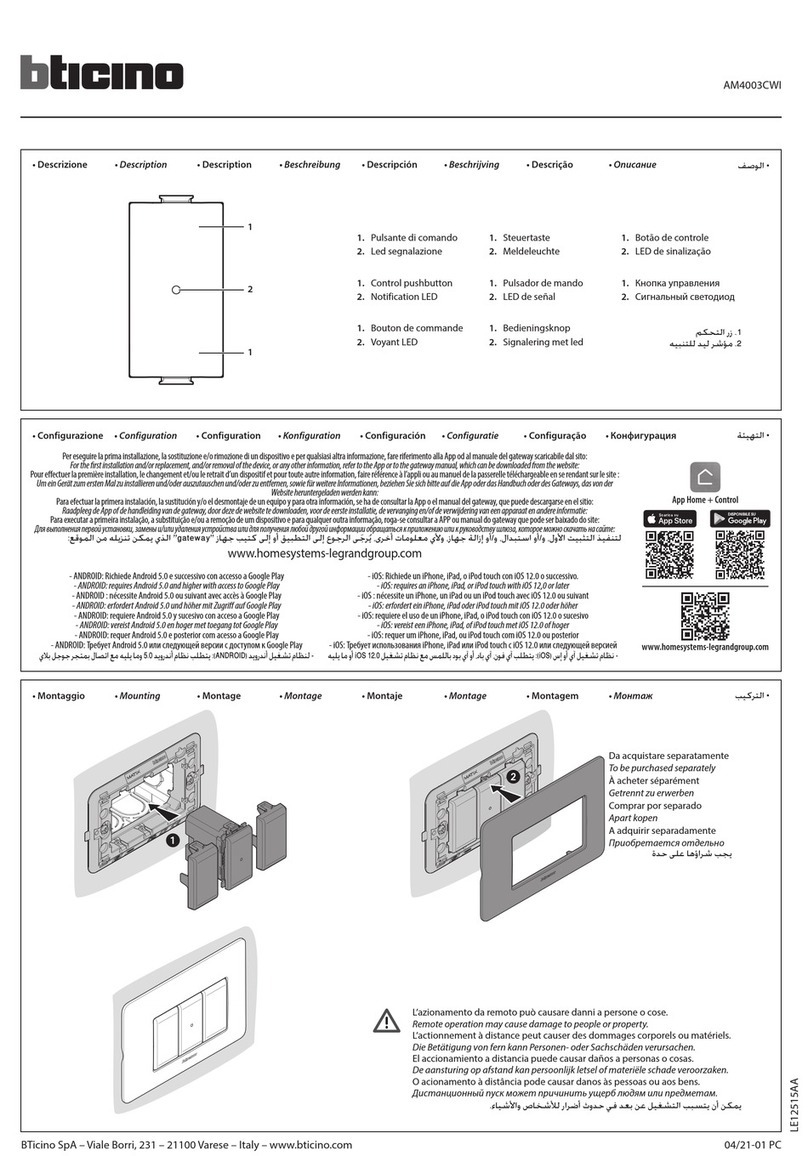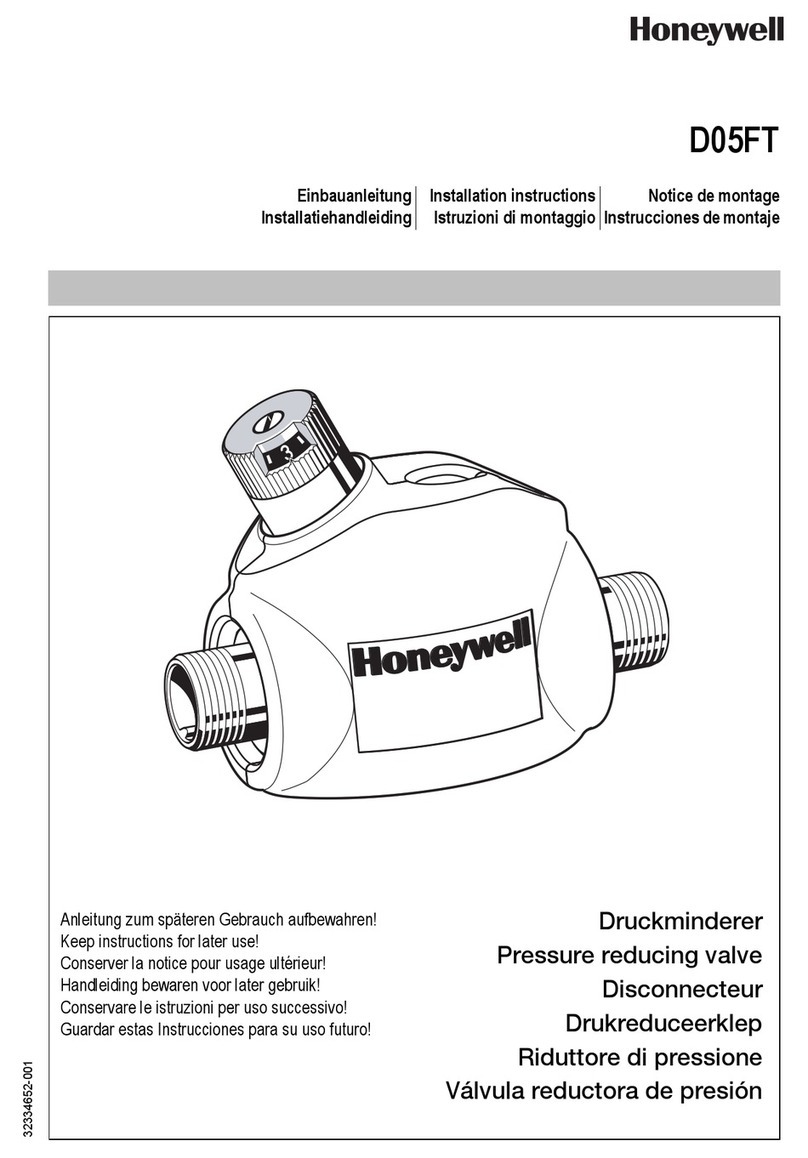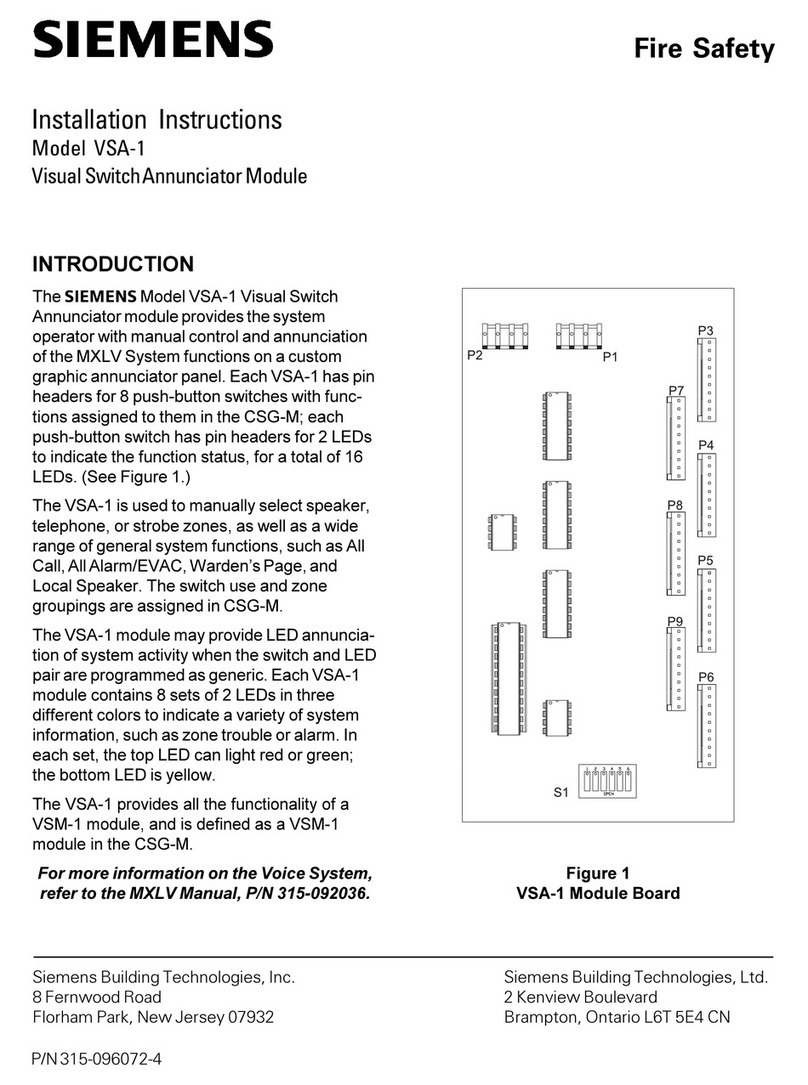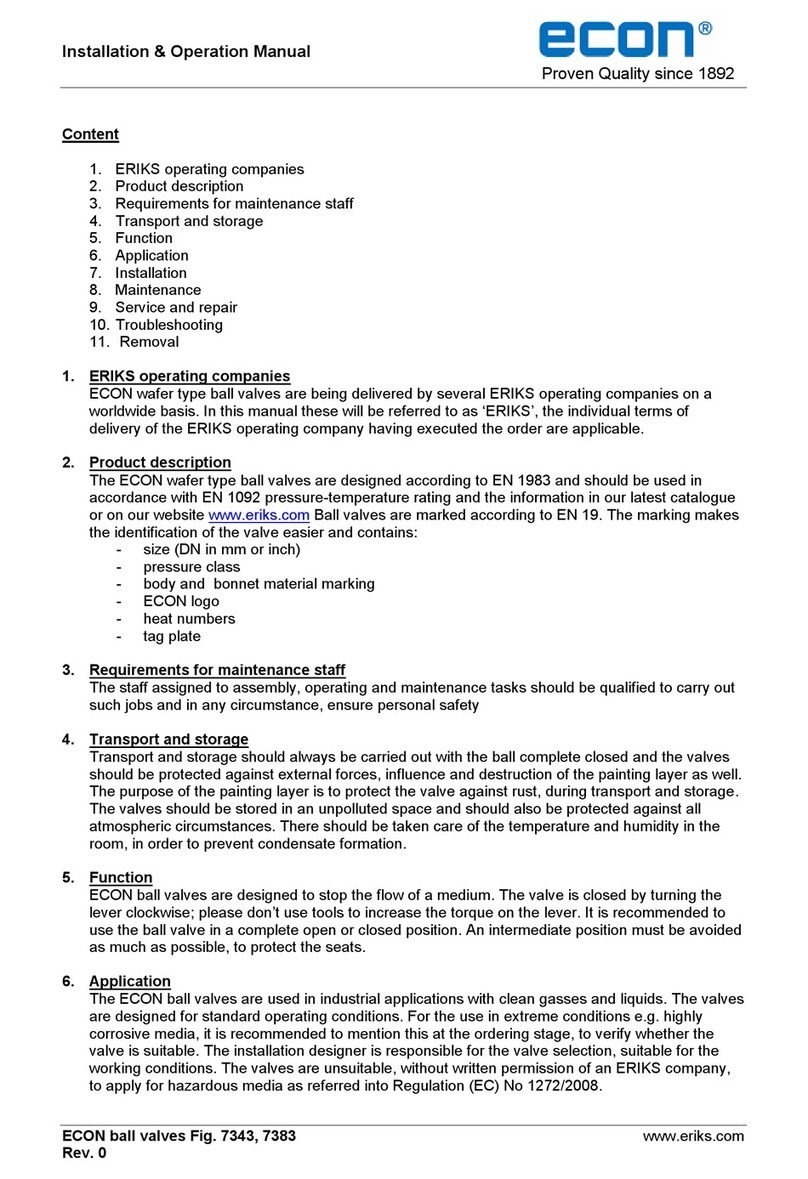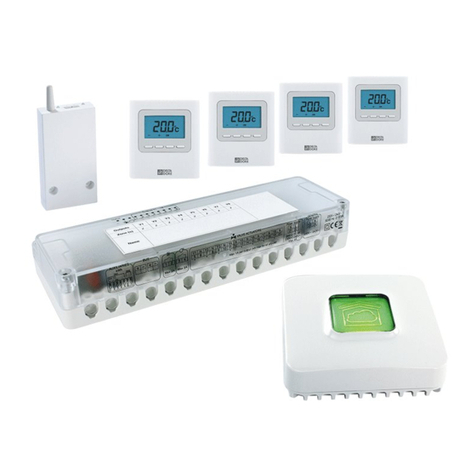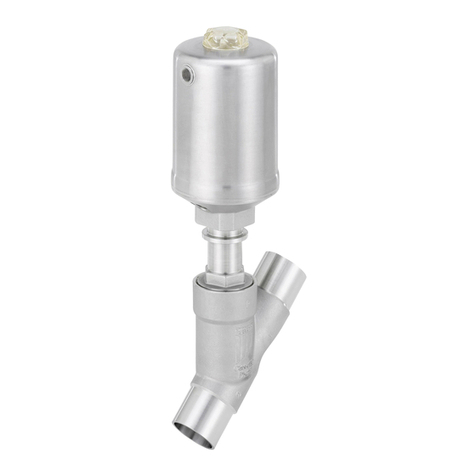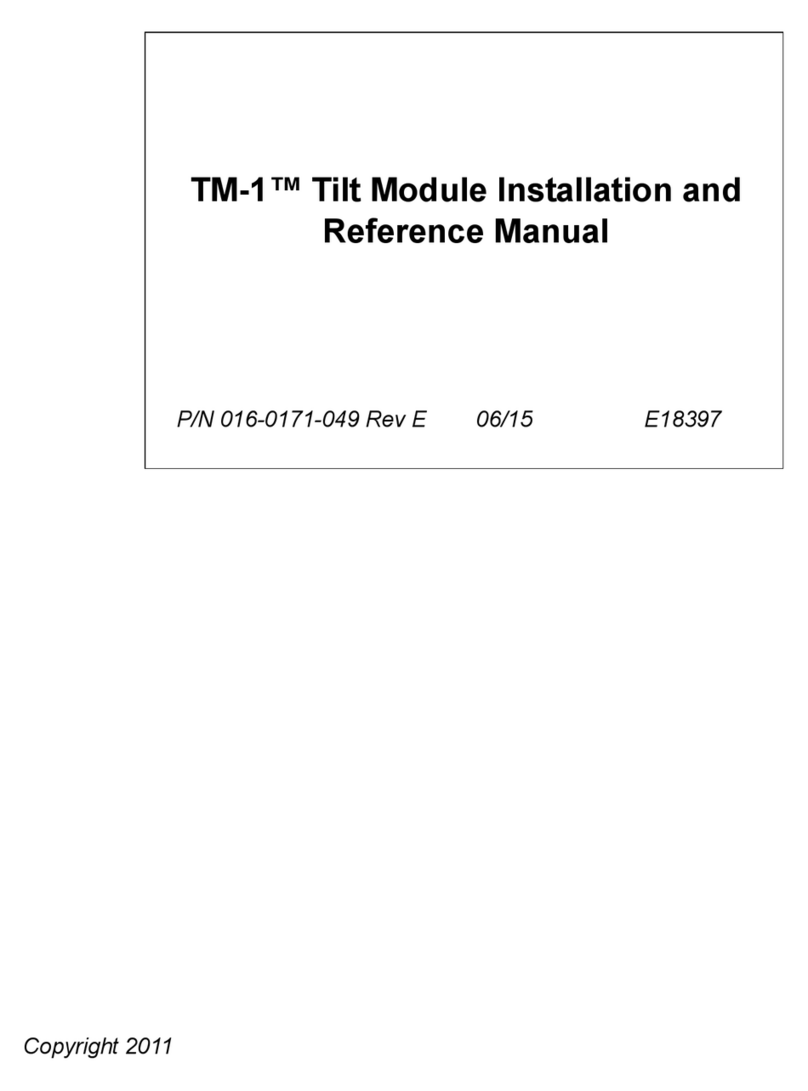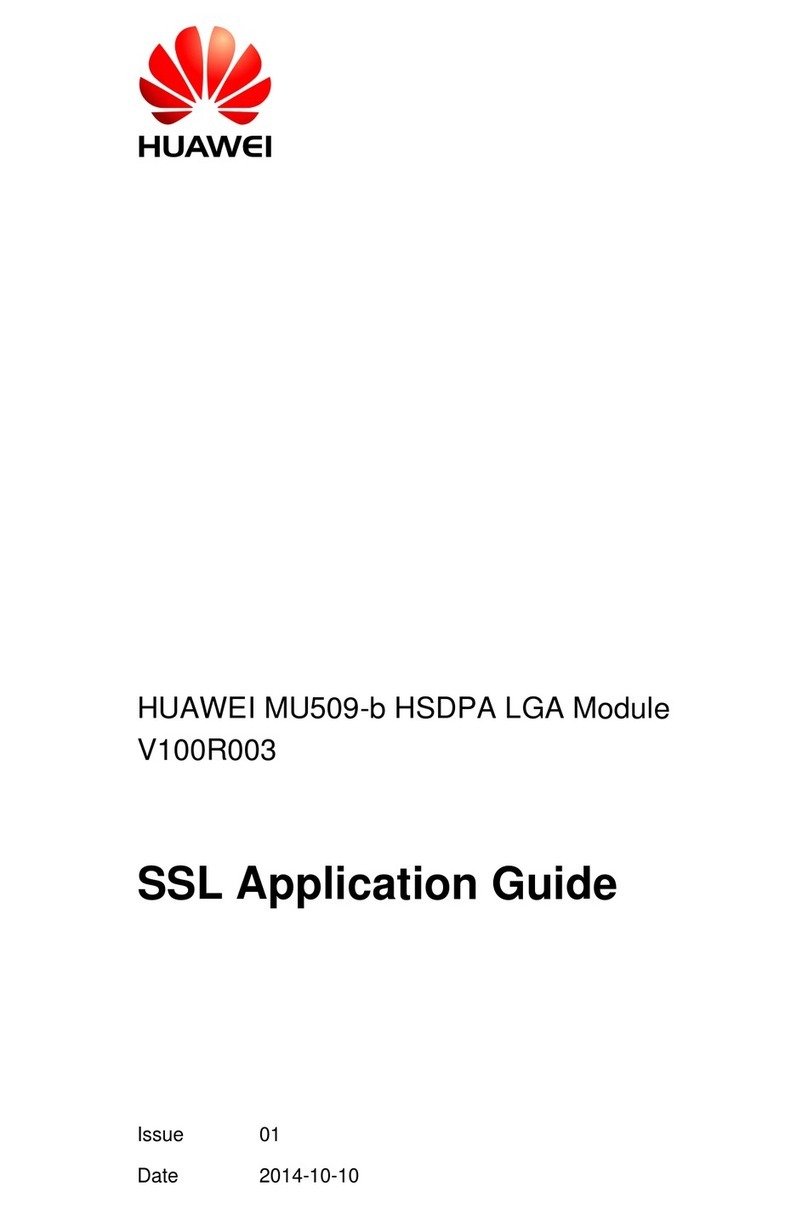Granville-Phillips Series 354 User manual

Granville-Phillips®Series 354 Micro-Ion®
Vacuum Gauge Module with
RS-485 Digital Interface
Instruction manual part number 354008
Revision C - September 2014
Series 354
Instruction Manual


© 2014 MKS Instruments, Inc. All rights reserved.
Granville-Phillips®and Micro-Ion®are registered trademarks of MKS Instruments, Inc.
All other trademarks and registered trademarks are the properties of their respective owners.
Instruction Manual
Series 354
Granville-Phillips®Series 354 Micro-Ion®
Vacuum Gauge Module with
RS-485 Digital Interface
This instruction manual is for use with Granville-Phillips
Series 354 Micro-Ion Vacuum Gauge Modules with
RS-485 Digital Interface. A list of applicable catalog
numbers is provided on the following page.
For Customer Service or Technical Support 24 hours per day,
7 days per week, every day of the year including holidays:
Phone: +1-800-227-8766 or +1-303-652-4691
MKS, Granville-Phillips Division
6450 Dry Creek Parkway
Longmont, CO 80503 USA
Phone: 1-303-652-4691 or 1-800-776-6543
FAX: 1-303-652-2844
Email: [email protected]
Corporate Office
MKS Instruments, Inc.
2 Tech Drive, Suite 201
Andover, MA 01810 USA
Phone: 1-978-645-5500
www.mksinst.com

Granville-Phillips®Series 354 Micro-Ion®
Vacuum Gauge Module with RS-485 Digital Interface
Catalog numbers for Series 354 Micro-Ion Modules
Power supply and cable are not included.
RS-485 interface, 1 setpoint relay:
Same as 354005, but with Varian Syntax (Torr only) 354029 - Y E - T
RS-485 interface, 1 setpoint relay:
Same as 354005, but with 90 Degree elbow (Torr only) 20354017
RS-485 interface, 1 setpoint relay:
No digital display (Torr Only 354005 - X X - T
Filaments:
dual yttria-coated iridium Y
dual tungsten T
Flange/Fitting:
NW16KF D
NW25KF E
NW40KF K
1.33 inch (NW16CF) Conflat-type F
2.75 inch (NW35CF) Conflat-type G
1/2 inch VCR-type male H
NW16KFL M
NW40KFL L
NW25KFL N

Series 354 Micro-Ion Vacuum Gauge Module
Instruction Manual - 354008 - Rev. C
5
Chapter 1 General Information . . . . . . . . . . . . . . . . . . . . . . . . . . . . . . . . . . . . . . . . . . . . . . . . . . . . . . . . . . . . . . . . . 7
1.1 Receiving Inspection . . . . . . . . . . . . . . . . . . . . . . . . . . . . . . . . . . . . . . . . . . . . . . . . . . . . . . . . . . . . . . . . . 7
1.2 International Shipment . . . . . . . . . . . . . . . . . . . . . . . . . . . . . . . . . . . . . . . . . . . . . . . . . . . . . . . . . . . . . . . 7
1.3 Warranty . . . . . . . . . . . . . . . . . . . . . . . . . . . . . . . . . . . . . . . . . . . . . . . . . . . . . . . . . . . . . . . . . . . . . . . . . . 7
1.4 Certification . . . . . . . . . . . . . . . . . . . . . . . . . . . . . . . . . . . . . . . . . . . . . . . . . . . . . . . . . . . . . . . . . . . . . . . . 7
1.5 Service Guidelines . . . . . . . . . . . . . . . . . . . . . . . . . . . . . . . . . . . . . . . . . . . . . . . . . . . . . . . . . . . . . . . . . . . 8
1.6 FCC Verification . . . . . . . . . . . . . . . . . . . . . . . . . . . . . . . . . . . . . . . . . . . . . . . . . . . . . . . . . . . . . . . . . . . . 8
Chapter 2 Safety . . . . . . . . . . . . . . . . . . . . . . . . . . . . . . . . . . . . . . . . . . . . . . . . . . . . . . . . . . . . . . . . . . . . . . . . . . . . . 9
2.1 Safety Introduction . . . . . . . . . . . . . . . . . . . . . . . . . . . . . . . . . . . . . . . . . . . . . . . . . . . . . . . . . . . . . . . . . . 9
2.2 Grounding Requirements . . . . . . . . . . . . . . . . . . . . . . . . . . . . . . . . . . . . . . . . . . . . . . . . . . . . . . . . . . . . . 11
2.3 High Voltage . . . . . . . . . . . . . . . . . . . . . . . . . . . . . . . . . . . . . . . . . . . . . . . . . . . . . . . . . . . . . . . . . . . . . . 11
2.4 Over-Pressure Conditions . . . . . . . . . . . . . . . . . . . . . . . . . . . . . . . . . . . . . . . . . . . . . . . . . . . . . . . . . . . . 12
2.5 System and Environment . . . . . . . . . . . . . . . . . . . . . . . . . . . . . . . . . . . . . . . . . . . . . . . . . . . . . . . . . . . . . 12
2.6 Responsibility . . . . . . . . . . . . . . . . . . . . . . . . . . . . . . . . . . . . . . . . . . . . . . . . . . . . . . . . . . . . . . . . . . . . . . 13
2.7 Damage Requiring Service . . . . . . . . . . . . . . . . . . . . . . . . . . . . . . . . . . . . . . . . . . . . . . . . . . . . . . . . . . . . 14
Chapter 3 Introduction . . . . . . . . . . . . . . . . . . . . . . . . . . . . . . . . . . . . . . . . . . . . . . . . . . . . . . . . . . . . . . . . . . . . . . 15
3.1 General Description . . . . . . . . . . . . . . . . . . . . . . . . . . . . . . . . . . . . . . . . . . . . . . . . . . . . . . . . . . . . . . . . . 15
3.2 Dimensions . . . . . . . . . . . . . . . . . . . . . . . . . . . . . . . . . . . . . . . . . . . . . . . . . . . . . . . . . . . . . . . . . . . . . . . 15
3.3 Specifications . . . . . . . . . . . . . . . . . . . . . . . . . . . . . . . . . . . . . . . . . . . . . . . . . . . . . . . . . . . . . . . . . . . . . . 16
3.4 Power Supply Requirements . . . . . . . . . . . . . . . . . . . . . . . . . . . . . . . . . . . . . . . . . . . . . . . . . . . . . . . . . . . 17
3.5 Component Description . . . . . . . . . . . . . . . . . . . . . . . . . . . . . . . . . . . . . . . . . . . . . . . . . . . . . . . . . . . . . 18
3.5.1 Power Indicator Lamp . . . . . . . . . . . . . . . . . . . . . . . . . . . . . . . . . . . . . . . . . . . . . . . . . . . . . . . . . 18
3.5.2 Address Selector Switch . . . . . . . . . . . . . . . . . . . . . . . . . . . . . . . . . . . . . . . . . . . . . . . . . . . . . . . . 18
3.5.3 Input/Output Connector . . . . . . . . . . . . . . . . . . . . . . . . . . . . . . . . . . . . . . . . . . . . . . . . . . . . . . . 18
3.5.4 Mounting Flange . . . . . . . . . . . . . . . . . . . . . . . . . . . . . . . . . . . . . . . . . . . . . . . . . . . . . . . . . . . . . 19
3.6 Theory of Operation . . . . . . . . . . . . . . . . . . . . . . . . . . . . . . . . . . . . . . . . . . . . . . . . . . . . . . . . . . . . . . . . 19
3.7 Emission Current . . . . . . . . . . . . . . . . . . . . . . . . . . . . . . . . . . . . . . . . . . . . . . . . . . . . . . . . . . . . . . . . . . . 20
3.8 Overpressure Shutdown . . . . . . . . . . . . . . . . . . . . . . . . . . . . . . . . . . . . . . . . . . . . . . . . . . . . . . . . . . . . . . 20
3.9 Degas Cycle . . . . . . . . . . . . . . . . . . . . . . . . . . . . . . . . . . . . . . . . . . . . . . . . . . . . . . . . . . . . . . . . . . . . . . . 20
Chapter 4 Installation and Configuration . . . . . . . . . . . . . . . . . . . . . . . . . . . . . . . . . . . . . . . . . . . . . . . . . . . . . . . . . 21
4.1 Introduction . . . . . . . . . . . . . . . . . . . . . . . . . . . . . . . . . . . . . . . . . . . . . . . . . . . . . . . . . . . . . . . . . . . . . . . 21
4.2 Grounding . . . . . . . . . . . . . . . . . . . . . . . . . . . . . . . . . . . . . . . . . . . . . . . . . . . . . . . . . . . . . . . . . . . . . . . . 21
4.3 I/O Cable Connections . . . . . . . . . . . . . . . . . . . . . . . . . . . . . . . . . . . . . . . . . . . . . . . . . . . . . . . . . . . . . . 21
4.4 Installation . . . . . . . . . . . . . . . . . . . . . . . . . . . . . . . . . . . . . . . . . . . . . . . . . . . . . . . . . . . . . . . . . . . . . . . . 23
4.4.1 Firmware Configuration . . . . . . . . . . . . . . . . . . . . . . . . . . . . . . . . . . . . . . . . . . . . . . . . . . . . . . . . 24
4.4.1.1 Resetting the Data Communication Parameters . . . . . . . . . . . . . . . . . . . . . . . . . . . . . . 25
4.5 Calculating a Gas Sensitivity Correction . . . . . . . . . . . . . . . . . . . . . . . . . . . . . . . . . . . . . . . . . . . . . . . . . 26
4.6 Very-High and Ultra-High Vacuum Measurement . . . . . . . . . . . . . . . . . . . . . . . . . . . . . . . . . . . . . . . . . 26
4.6.1 Micro-Ion Vacuum Gauge Module Process Chamber Baking . . . . . . . . . . . . . . . . . . . . . . . . . . . 27
Chapter 5 RS-485 Digital Interface Specifications and Protocol . . . . . . . . . . . . . . . . . . . . . . . . . . . . . . . . . . . . . . . 29
5.1 Introduction . . . . . . . . . . . . . . . . . . . . . . . . . . . . . . . . . . . . . . . . . . . . . . . . . . . . . . . . . . . . . . . . . . . . . . . 29
5.2 Interface Configuration . . . . . . . . . . . . . . . . . . . . . . . . . . . . . . . . . . . . . . . . . . . . . . . . . . . . . . . . . . . . . . 29
5.3 Receive/Transmit Timing . . . . . . . . . . . . . . . . . . . . . . . . . . . . . . . . . . . . . . . . . . . . . . . . . . . . . . . . . . . . 34
Chapter 6 Troubleshooting . . . . . . . . . . . . . . . . . . . . . . . . . . . . . . . . . . . . . . . . . . . . . . . . . . . . . . . . . . . . . . . . . . . 37
6.1 Introduction . . . . . . . . . . . . . . . . . . . . . . . . . . . . . . . . . . . . . . . . . . . . . . . . . . . . . . . . . . . . . . . . . . . . . . . 37
6.2 Troubleshooting Procedures . . . . . . . . . . . . . . . . . . . . . . . . . . . . . . . . . . . . . . . . . . . . . . . . . . . . . . . . . . . 37
Chapter 7 Service . . . . . . . . . . . . . . . . . . . . . . . . . . . . . . . . . . . . . . . . . . . . . . . . . . . . . . . . . . . . . . . . . . . . . . . . . . . 39
7.1 Introduction . . . . . . . . . . . . . . . . . . . . . . . . . . . . . . . . . . . . . . . . . . . . . . . . . . . . . . . . . . . . . . . . . . . . . . . 39
7.2 Micro-Ion Vacuum Gauge (with Digital Interface) Module Initialization . . . . . . . . . . . . . . . . . . . . . . . . 39
7.2.1 Initialization . . . . . . . . . . . . . . . . . . . . . . . . . . . . . . . . . . . . . . . . . . . . . . . . . . . . . . . . . . . . . . . . . 39
7.3 Degas Cycle . . . . . . . . . . . . . . . . . . . . . . . . . . . . . . . . . . . . . . . . . . . . . . . . . . . . . . . . . . . . . . . . . . . . . . . 41
7.3.1 Digital Interface . . . . . . . . . . . . . . . . . . . . . . . . . . . . . . . . . . . . . . . . . . . . . . . . . . . . . . . . . . . . . . 41
7.4 Fuse Replacement . . . . . . . . . . . . . . . . . . . . . . . . . . . . . . . . . . . . . . . . . . . . . . . . . . . . . . . . . . . . . . . . . . 41
Table of Contents

6Series 354 Micro-Ion Vacuum Gauge Module
Instruction Manual - 354008 - Rev. C
7.5 Micro-Ion Gauge Replacement . . . . . . . . . . . . . . . . . . . . . . . . . . . . . . . . . . . . . . . . . . . . . . . . . . . . . . . . 42
7.6 Ion Gauge Continuity Test . . . . . . . . . . . . . . . . . . . . . . . . . . . . . . . . . . . . . . . . . . . . . . . . . . . . . . . . . . . 44
7.7 Service Guidelines . . . . . . . . . . . . . . . . . . . . . . . . . . . . . . . . . . . . . . . . . . . . . . . . . . . . . . . . . . . . . . . . . . 46

1 General Information
7
Series 354 Micro-Ion Vacuum Gauge Module
Instruction Manual - 354008 - Rev. C
Chapter 1
1General Information
1.1 Receiving Inspection
On receipt of the equipment, inspect all material for damage. Confirm that the shipment includes
all items ordered. If items are missing or damaged, submit a claim as stated below for a domestic or
international shipment, whichever is applicable.
If materials are missing or damaged, the carrier that made the delivery must be notified within 15
days of delivery, or in accordance with Interstate Commerce regulations for the filing of a claim.
Any damaged material including all containers and packaging should be held for carrier inspection.
Contact MKS, Granville-Phillips Division Customer Support for assistance if your shipment is not
correct for reasons other than shipping damage.
1.2 International Shipment
Inspect all materials received for shipping damage and confirm that the shipment includes all items
ordered. If items are missing or damaged, the airfreight forwarder or airline making delivery to the
customs broker must be notified within 15 days of delivery.The following illustrates to whom the
claim is to be directed.
• If an airfreight forwarder handles the shipment and their agent delivers the shipment to customs,
the claim must be filed with the airfreight forwarder.
• If an airfreight forwarder delivers the shipment to a specific airline and the airline delivers the
shipment to customs, the claim must be filed with the airline.
Any damaged material including all containers and packaging should be held for carrier inspection.
Contact Granville-Phillips Customer Support for assistance if your shipment is not correct for
reasons other than shipping damage.
1.3 Warranty
MKS Instruments, Inc. provides an eighteen (18) month warranty from the date of shipment for new
Granville-Phillips Products. The MKS General Terms and Conditions of Sale provides the complete
and exclusive warranty for Granville-Phillips products. This document may be located on our web
site at www.mksinst.com, or may be obtained by contacting a Granville-Phillips Customer Service
Representative.
1.4 Certification
MKS Instruments, Inc. certifies that this product met its published specifications at the time of
shipment from the factory. MKS Instruments, Inc. further certifies that its calibration measurements
are traceable to the National Institute of Standards and Technology to the extent allowed by the
Institute's calibration facility.

1 General Information
8Series 354 Micro-Ion Vacuum Gauge Module
Instruction Manual - 354008 - Rev. C
1.5 Service Guidelines
Some minor problems are readily corrected on site. If the product requires service, contact the MKS,
Granville-Phillips Division Customer Service Department at +1-800-227-8766 or +1-303-652-4691
for troubleshooting help over the phone.
If the product must be returned to the factory for service, request a Return Material Authorization
(RMA) from Granville-Phillips. Do not return products without first obtaining an RMA. In some
cases a hazardous materials document may be required. The MKS/Granville-Phillips Customer
Service Representative will advise you if the hazardous materials document is required.
When returning a products to Granville-Phillips, be sure to package the products to prevent
shipping damage. Circuit boards and modules separated from the gauge assembly must be handled
using proper anti-static protection methods and must be packaged in anti-static packaging.
Granville-Phillips will supply return packaging materials at no charge upon request. Shipping
damage on returned products as a result of inadequate packaging is the Buyer's responsibility.
For Customer Service or Technical Support 24 hours per day, 7 days per week, every day of the year
including holidays:
Phone: +1-800-227-8766 or +1-303-652-4691
Email: [email protected]
MKS, Granville-Phillips Division
6450 Dry Creek Parkway
Longmont, CO 80503 USA
Phone: 1-303-652-4691 or 1-800-776-6543
FAX: 1-303-652-2844
1.6 FCC Verification
This equipment was tested and complies with the limits for a Class A digital device, pursuant to Part
15 of the FCC Rules. These limits are designed to provide reasonable protection against harmful
interference when the equipment is operated in a commercial environment. This equipment
generates, uses, and can radiate radio frequency energy and, if not installed and used in accordance
with this instruction manual, may cause harmful interference to radio communications. However,
there is no guarantee that interference will not occur in a particular installation.
Operation of this equipment in a residential area is likely to cause harmful interference in which
case the user will be required to correct the interference at his own expense. If this equipment does
cause harmful interference to radio or television reception, which can be determined by turning the
equipment off and on, the user is encouraged to try to correct the interference by one or more of the
following measures:
• Reorient or relocate the receiving antenna.
• Increase the separation between the equipment and the receiver.
• Connect the equipment into an outlet on a circuit different from that to which the receiver is
connected.
• Consult the dealer or an experienced radio or television technician for help.

2 Safety
9
Series 354 Micro-Ion Vacuum Gauge Module
Instruction Manual - 354008 - Rev. C
Chapter 2
2Safety
2.1 Safety Introduction
START BY READING THESE IMPORTANT SAFETY INSTRUCTIONS AND NOTES collected here
for your convenience and repeated with additional information at appropriate points throughout
this instruction manual.
These safety alert symbols in this manual or on the Product mean caution - personal safety, property
damage or danger from electric shock. Read these instructions carefully.
This product was designed and tested to offer reasonably safe service provided it is installed,
operated, and serviced in strict accordance with these safety instructions.
Danger indicates a hazardous situation which, if not
avoided, will result in death or serious injury.
Warning indicates a hazardous situation which, if not
avoided, could result in death or serious injury.
Caution indicates a hazardous situation or unsafe
practice which, if not avoided, may result in minor or
moderate personal injury.
Indicates a situation or unsafe practice which, if not
avoided, may result in equipment damage.
Notice
These instructions do not and cannot provide for every contingency that
may arise in connection with the installation, operation, or maintenance of
this product. If you require further assistance, contact Granville-Phillips at
the address on the title page of this instruction manual.
Safety Precautions
Failure to comply with these instructions may result in serious
personal injury, including death, or property damage.
Always observe and follow all safety notices that are
provided throughout this instruction manual and on the
product.

2 Safety
10 Series 354 Micro-Ion Vacuum Gauge Module
Instruction Manual - 354008 - Rev. C
These safety precautions must be observed during all phases of operation, installation, and service
of this product. Failure to comply with these precautions or with specific warnings elsewhere in this
manual violates safety standards of design, manufacture, and intended use of the instrument. MKS
Instruments, Inc. disclaims all liability for the customer's failure to comply with these requirements.
•Read Instructions – Read all safety and operating instructions before operating the product.
•Retain Instructions – Retain the Safety and Operating Instructions for future reference.
•Heed Warnings – Adhere to all warnings on the product and in the operating instructions.
•Follow Instructions – Follow all operating and maintenance instructions.
•Accessories – Do not use accessories not recommended in this manual as they may be
hazardous.
Electrical Shock or Personal Injury
The service and repair information in this manual is for the use
of Qualified Service Personnel. To avoid possible electrical
shock or personal injury, do not perform any procedures in
this manual or perform any servicing on this product unless
you are qualified to do so.
Electrical Shock or Fire
To reduce the risk of fire or electric shock, do not expose this
product to rain or moisture.
Objects and Liquid Entry - Never push objects of any kind into
this product through openings as they may touch dangerous
voltage points or short out parts that could result in a fire or
electric shock. Be careful not to spill liquid of any kind onto the
products.

2 Safety
11
Series 354 Micro-Ion Vacuum Gauge Module
Instruction Manual - 354008 - Rev. C
2.2 Grounding Requirements
See Grounding, Section 4.2 in the Installation chapter for more detailed requirements regarding
gauge and system grounding.
2.3 High Voltage
High Voltage is present in the Micro-Ion Gauge Module when the module is powered ON.
Hazardous voltages may still be present in the module for some time after disconnecting power to
the module. Refer to the Installation and Service chapters for more information.
Proper Grounding
All components of a vacuum system used with this or any
similar high voltage product must be maintained at Earth
ground for safe operation.
Be aware that grounding this product does not guarantee that
other components of the vacuum system are maintained at
Earth ground.
Verify that the vacuum port to which the Series 354 Micro-Ion
Gauge is mounted is electrically grounded. It is essential for
personnel safety as well as proper operation that the
envelope of the gauge be connected to a facility ground. See
Section 4.2 for detailed grounding instructions.
Connect power cords only to properly grounded outlets or
sources.
High Voltage
Be aware that when high voltage is present in any vacuum
system, a life threatening electrical shock hazard may exist
unless all exposed conductors are maintained at Earth ground.
This hazard is not unique to this product.
High Voltage
All conductors in, on, or around the vacuum system that are
exposed to potential high voltage electrical discharges must
either be shielded at all times to protect personnel or must be
connected to Earth ground at all times.
Ion producing equipment, such as ionization gauges, mass
spectrometers, sputtering systems, etc., may under some
conditions provide sufficient conduction via a plasma to couple
a high voltage electrode to the vacuum chamber. If conductive
parts of the chamber are not grounded, they may attain a
potential near that of the high voltage electrode during this
coupling.

2 Safety
12 Series 354 Micro-Ion Vacuum Gauge Module
Instruction Manual - 354008 - Rev. C
2.4 Over-Pressure Conditions
Suppliers of pressure relief valves and pressure relief disks can be located via an online search, and
are listed in the Thomas Register under “Valves, Relief”, and “Discs, Rupture”. Confirm that these
safety devices are properly installed before installing the product.
Ensure the following precautions are complied with at all times:
(1) the proper gas cylinders are installed
(2) the gas cylinder valve positions are correct on manual systems
(3) the automation is correct on automated gas delivery systems
Vacuum gauges with compression fittings may be forcefully ejected if the vacuum system is
pressurized.
2.5 System and Environment
High Voltage
Be aware that an electrical discharge through a gas may
couple dangerous high voltage directly to an ungrounded
conductor almost as effectively as would a copper wire
connection. A person may be seriously injured or even killed
by merely touching an exposed ungrounded conductor at high
potential.
This hazard is not unique to this product.
Over-Pressure Conditions
Install suitable devices that will limit the pressure to the level the
vacuum system can safely withstand. In addition, install
suitable pressure relief valves or rupture disks that will release
pressure at a level considerably below the pressure that the
system can safely withstand.
Explosive Environment
Do not use the Series 354 Micro-Ion Gauge in an environment
of explosive or combustible gases or gas mixtures. Operation
of any electrical instrument in such an environment constitutes
a definite safety hazard. Do not use the product to measure
the pressure of explosive gases or gas mixtures.

2 Safety
13
Series 354 Micro-Ion Vacuum Gauge Module
Instruction Manual - 354008 - Rev. C
2.6 Responsibility
It is the responsibility of the Customer to comply with all local, state, and federal ordinances,
regulations, and laws applicable to the installation, operation and service of this equipment.
It is the responsibility of the end user to provide sufficient lighting at work to meet local regulations.
Operation and Service of this equipment in strict accordance with the methods and procedures
supplied by MKS, Granville-Phillips Division is the responsibility of the Customer.
MKS Instruments, Inc. assumes no liability, whatsoever, for any personal injuries or damages
resulting from the operation or service of this equipment in any manner inconsistent or contrary to
the methods supplied in Granville-Phillips literature including, but not limited to, manuals,
instructions, bulletins, communications, and recommendations.
For emergencies and for product safety related matters, contact Granville-Phillips Customer Service
Department. See Section 1.5 or Section 7.7 for detailed information regarding how to contact
Granville-Phillps Customer Service Representatives.
Chemical Fumes / Explosive Environment
The fumes from solvents such as trichloroethylene,
perchloroethylene, toluene, and acetone can be dangerous to
health if inhaled. Use only in well ventilated areas exhausted
to the outdoors.
Acetone and toluene are highly flammable and should not be
used near an open flame or energized electrical equipment.
Potential Automatic Operation
It is the installer's responsibility to ensure that the automatic
signals provided by the product are always used in a safe
manner. Carefully check the system programming before
switching to automatic operation.
Vacuum Chamber High Pressures
Where an equipment malfunction could cause a hazardous
situation, always provide for fail-safe operation. As an
example, in an automatic backfill operation where a
malfunction might cause high internal pressures, provide an
appropriate pressure relief device.

2 Safety
14 Series 354 Micro-Ion Vacuum Gauge Module
Instruction Manual - 354008 - Rev. C
2.7 Damage Requiring Service
Disconnect the product from all power sources and refer servicing to Qualified Service Personnel
under the following conditions:
a. When any cable or plug is damaged.
b. If any liquid has been spilled onto, or objects have fallen into the product.
c. If the product has been exposed to rain or water.
d. If the product does not operate normally even if you follow the operating instructions.
Adjust only those controls that are covered by the operation instructions. Improper
adjustment of other controls may result in damage and will often require extensive work
by a qualified technician to restore the product to its normal operation.
e. If the product has been dropped or the enclosure has been damaged.
f. When the product exhibits a distinct change in performance. This indicates a need for
service.
Notice
Do not substitute parts or modify the instrument.
Because of the danger of introducing additional hazards, do not install
substitute parts or perform any unauthorized modification to the product.
Return the product to a service facility designated by Granville-Phillips for
service and repair to ensure that safety features are maintained. Do not use
this product if it has unauthorized modifications.
Notice
Safety Check - Upon completion of any service or repairs to this product,
ask the Qualified Service Person to perform safety checks to determine that
the product is in safe operating order.
Notice
Finite Lifetime - After ten years of normal use or even non-use, the electrical
insulation in this product may become less effective at preventing electrical
shock. Under certain environmental conditions which are beyond the
manufacturer’s control, some insulation material may deteriorate sooner.
Therefore, periodically inspect all electrical insulation for cracks, crazing, or
other signs of deterioration. Do not use if the electrical insulation has
become unsafe.

3 Introduction
15
Series 354 Micro-Ion Vacuum Gauge Module
Instruction Manual - 354008 - Rev. C
Chapter 3
3Introduction
3.1 General Description
The Model 354 Micro-Ion Vacuum Gauge Module, shown in Figure 3-1, is a modular instrument
that is capable of measuring vacuum pressures from 1 x 10-9 Torr to 5 x 10-2 Torr - N2equivalent (or
air).
The 354 Micro-Ion Vacuum Gauge Module is a small rugged unit that has a wider measurement
range, more burnout resistance, and generates less heat than typical glass gauges. Additional
benefits include:
• Compact, Convenient, Cost Saving Vacuum Measurement
• Rugged Metal Construction
• Robust Filament Design
• Increased Uptime
• Rapid response during Pumpdown
• Cooler Operation
• Easy Compatibility with Computer Controlled Processes
The RS-485 digital interface version provides industry-standard digital RS485 communications over
networks as well as direct connections to a personal computer. The setpoint relay, filament, and
degassing of the gauge tube can be easily controlled via the RS-485 digital interface.
The setpoint relay can be used to control various devices such as; safety interlock, valve, digital
input for a scanner, or programmable logic controller. The setpoint relay trip points can be set to
customized pressure settings to turn power ON or OFF to the appropriate device.
3.2 Dimensions
Figure 3-1: Series 354 Micro-Ion Vacuum Gauge Dimensions
2.80 in
(71.12 mm)
3.00 in
(76.20 mm)
MOUNTING FLANGE
2.60 in
(66.04 mm)
See Dimension H
on Table 3-1

3 Introduction
16 Series 354 Micro-Ion Vacuum Gauge Module
Instruction Manual - 354008 - Rev. C
3.3 Specifications
Refer to Table 3-1, Table 3-2 and Table 3-3 for performance and physical specifications of the
354 Micro-Ion Vacuum Gauge.
Table 3-1: Vacuum Connection Fitting Dimensions
Fitting Description Dimension H
NW16KF flange
NW25KF flange
NW40KF flange
2.0 cm (0.8 in.)
2.0 cm (0.8 in.)
2.0 cm (0.8 in.)
1.33 in. (NW16CF) ConFlat-type
2.75 in. (NW35CF) ConFlat-type
4.3 cm (1.7 in.)
4.3 cm (1.7 in.)
1/2 inch VCR-type male 5.8 cm (2.3 in.)
Table 3-2: Performance Specifications
Parameter Specification
Measurement Range 1 x 10-9 to 5 x 10-2 Torr for N2or air
NOTE: For use below 1 x 10-7 Torr, use a flange with a metal
seal
Overpressure Protection Gauge tube turns off if pressure rises above 5 x 10-2 Torr at 100
microamperes or 1.3 x 10-3 Torr at 4 milliampere emission
Emission Current 100 µA, 4 mA
Operating Voltage and
Power +24 Vdc, ±15%, 0.5 Amperes, 12 Watts maximum.
NOTE: Customer supplied power supply
Degas Electron bombardment, approximately 4 watts with 2 minute
timer
Filament Selection Programmed through the digital interface
Setpoint Relay Single pole-double throw relay (SPDT)
Silver alloy-gold clad contacts
1A, 30 Vdc, resistive load or AC non-inductive

3 Introduction
17
Series 354 Micro-Ion Vacuum Gauge Module
Instruction Manual - 354008 - Rev. C
3.4 Power Supply Requirements
The customer supplied power supply should provide operating voltage and current to the 354
Micro-Ion Vacuum Gauge Module as specified in Table 3-2.
Table 3-3: Physical Specifications
Parameter Specification
Vacuum Connections O-ring - NW16KF flange
O-ring - NW25KF flange
Metal Seal - 1-5/16 inches
Metal Seal - 2-3/4 inches
1/2 in. 8-VCR male fitting
Electrical Connection 9 pin D connector
Weight 13 oz
Case Material Aluminum extrusion
Gauge Tube Replacement Field replaceable using a Phillips screwdriver
Electrical Safety Metal enclosure which houses 180 V supply will
require use of a metal flange clamp to assure
ground continuity to system
Operating Temp Range 0oC to 40 oC
Non-operating Temp Range -40 oC to 70 oC
IP Rating IP20
Table 3-4: RS-485 Communication Parameters
Parameter Default Value Range of Values
Baud Rate 19,200 300, 600, 1200, 2400, 4800, 9600, 14,400,
19,200, 28,800
Data Format 8 bits 8
Parity None none
Stop Bits 1 N/A

3 Introduction
18 Series 354 Micro-Ion Vacuum Gauge Module
Instruction Manual - 354008 - Rev. C
3.5 Component Description
The top plate of the 354 Micro-Ion Vacuum Gauge Module with RS-485 Digital Interface is shown
in Figure 3-2 and described in the following paragraphs.
Figure 3-2: 354 Micro-Ion Vacuum Gauge Module Top Plate
3.5.1 Power Indicator Lamp
The Power Indicator lamp illuminates when 24 VDC is applied to the Micro-Ion Vacuum Gauge
Module from a customer supplied power source.
3.5.2 Address Selector Switch
The Address Selector Switch determines the network address for the Micro-Ion Vacuum Gauge
Module. The switch position must be set to the appropriate network address for each Micro-Ion
Vacuum Gauge Module on the network.
3.5.3 Input/Output Connector
The Input/Output Connector provides a connection to the Micro-Ion Vacuum Gauge Module for 24
VDC Input power and various gauge signals. See Figure 3-3 for pin assignments.
Figure 3-3: Input/Output Connector Pin Assignments
ADDRESS SELECTOR
SWITCH
INPUT/OUTPUT
CONNECTOR
POWER INDICATOR
LAMP
PIN 2 - POWER INPUT
PIN 3 - NO CONNECTION
PIN 4 - POWER GROUND PIN 9 - RS-485 (+) INPUT
PIN 8 - NO CONNECTION
PIN 7 - SETPOINT RELAY COMMON
PIN 6 - RS-485 (-) INPUT
PIN 5 - SETPOINT RELAY - N.C.
PIN 1 - SETPOINT RELAY - N.O.
MALE PINS

3 Introduction
19
Series 354 Micro-Ion Vacuum Gauge Module
Instruction Manual - 354008 - Rev. C
3.5.4 Mounting Flange
The Micro-Ion Vacuum Gauge Module can be equipped with a metal seal, O-ring, or VCR type
mounting flange as listed in Table 3-1. The type of flange must be specified when ordering the
Micro-Ion Vacuum Gauge Module.
3.6 Theory of Operation
The functional parts of a typical ionization gauge are the filament (cathode), grid (anode) and ion
collector, which are shown in Figure 3-4. These electrodes are maintained by the gauge controller
at +30, +180, and 0 volts, relative to ground, respectively.
Figure 3-4: Ion Gauge Schematic
The filament is heated to such a temperature that electrons are emitted, and accelerated toward the
grid by the potential difference between the grid and filament. Most of the electrons eventually
collide with the grid, but many first traverse the region inside the grid many times.
When an energetic electron collides with a gas molecule an electron may be dislodged from the
molecule leaving it with a positive charge. Most ions are then accelerated to the collector.
The rate at which electron collisions with molecules occur is proportional to the density of gas
molecules, and hence the ion current is proportional to the gas density (or pressure, at constant
temperature).
The amount of ion current for a given emission current and pressure depends on the ion gauge
design. This gives rise to the definition of ion gauge sensitivity, frequently denoted by K:
K = ion current/(emission current x pressure)
The Micro-Ion Vacuum Gauge typically has a sensitivity of 20/Torr when used with nitrogen or air.
Refer to Chapter 4 - Installation and Configuration for more information.
The Micro-Ion Vacuum Gauge controller varies the heating current to the filament to maintain a
constant electron emission, and measures the ion current to the collector. The pressure is then
calculated from these data.
The Micro-Ion Vacuum Gauge degas cycle is accomplished by increasing the emission current to
15 mA and raising the grid bias to 250 Vdc resulting in an increased temperature of the grid to drive
off contaminants.
FILAMENT ION COLLECTOR
GRID

3 Introduction
20 Series 354 Micro-Ion Vacuum Gauge Module
Instruction Manual - 354008 - Rev. C
3.7 Emission Current
There are two ranges of emission current available. Either 100 microamperes or 4 milliamperes are
available as determined by the digital interface. While either range can be used continuously, the
following guidelines are suggested. For operation in the higher pressure ranges with a clean system
100 microamperes emission is satisfactory. This will give a theoretical longer filament life and
allows usage to where the gauge pressure reading overlaps with other type transducers such as the
Convectron or capacitance manometer. For operation in the lower pressure ranges the 4
milliampere range should be used to give a more accurate pressure reading.
Internal circuitry corrects the pressure output data for the emission current selected. There is a
problem with all ion gauges when used in systems which have the potential for diffusion pump oil
vapor to enter the gauge tube.
This oil vapor deposits on the grid forming an insulator and preventing emission resulting in higher
and higher filament power being required and ultimate inability to control emission. In this
situation the 4 milliampere position is recommended.
3.8 Overpressure Shutdown
Overpressure shutdown is programmable by use of the computer interface. This is preset at
5 x 10-2 Torr when operating at 100 µA emission or 1.3 x 10-3 Torr at 4 mA emission.
3.9 Degas Cycle
Pump oil, other organic compounds, or metal coatings from a sputtering process can cause
electrical current leakage between the ion gauge tube elements. When contamination occurs,
system base pressure readings may begin to rise which is an indication that a degas cycle should be
performed.
The removal of gas from the gauge tube is accomplished by electron bombardment (EB) heating of
the grid. Pressure reading during a degas cycle is provided. To activate the degas circuit, the IG ON
circuit must first be activated. This assures that there is a vacuum in the system prior to the degas
cycle. The degas circuit will turn OFF if the IG ON circuit is turned OFF.
Due to the small size of the gauge, power during a degas cycle is approximately 4 watts above
operating power and is turned OFF automatically after a two minute period.
Refer to Chapter 7 - Service for more information on performing a degas cycle.
Filament Life
To obtain optimum filament life, Micro-Ion Vacuum Gauges
equipped with tungsten filaments should not be operated above
5x10-3 Torr in air.
Table of contents
Other Granville-Phillips Control Unit manuals
Popular Control Unit manuals by other brands
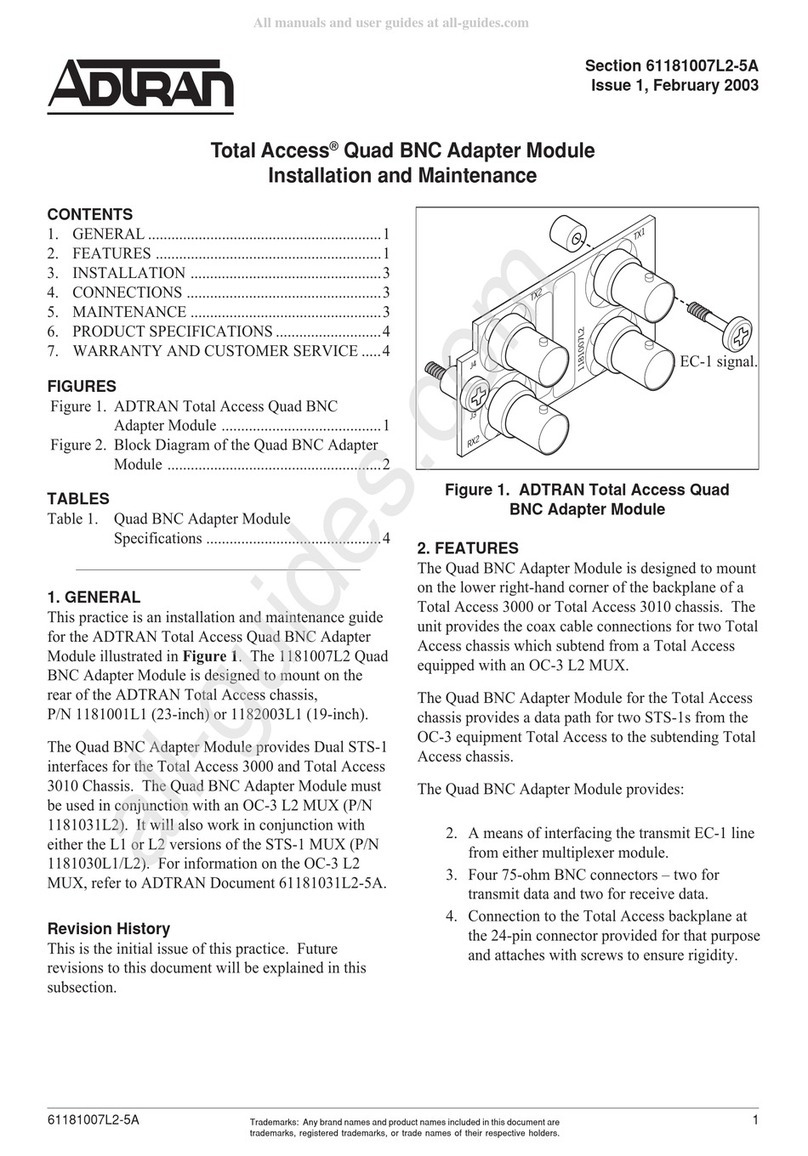
ADTRAN
ADTRAN Total Access Quad BNC Installation and Maintenance
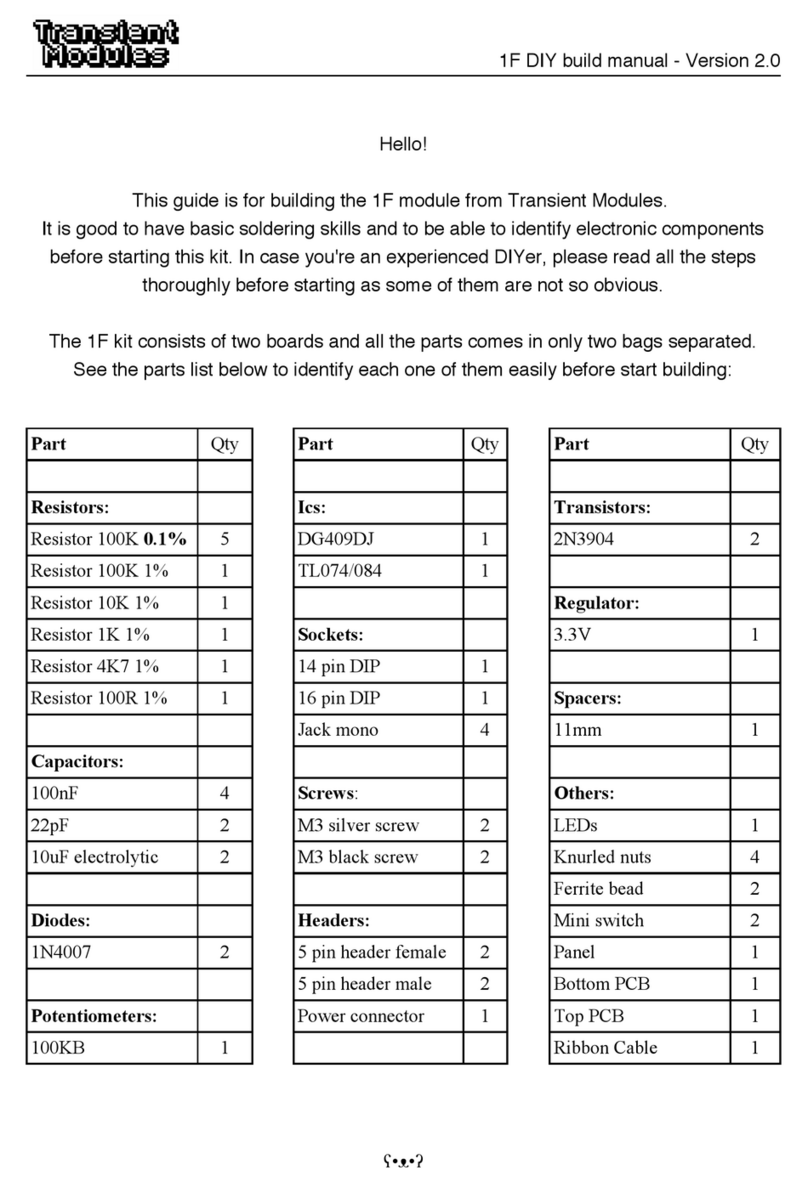
Transient Modules
Transient Modules 1F DIY Manual
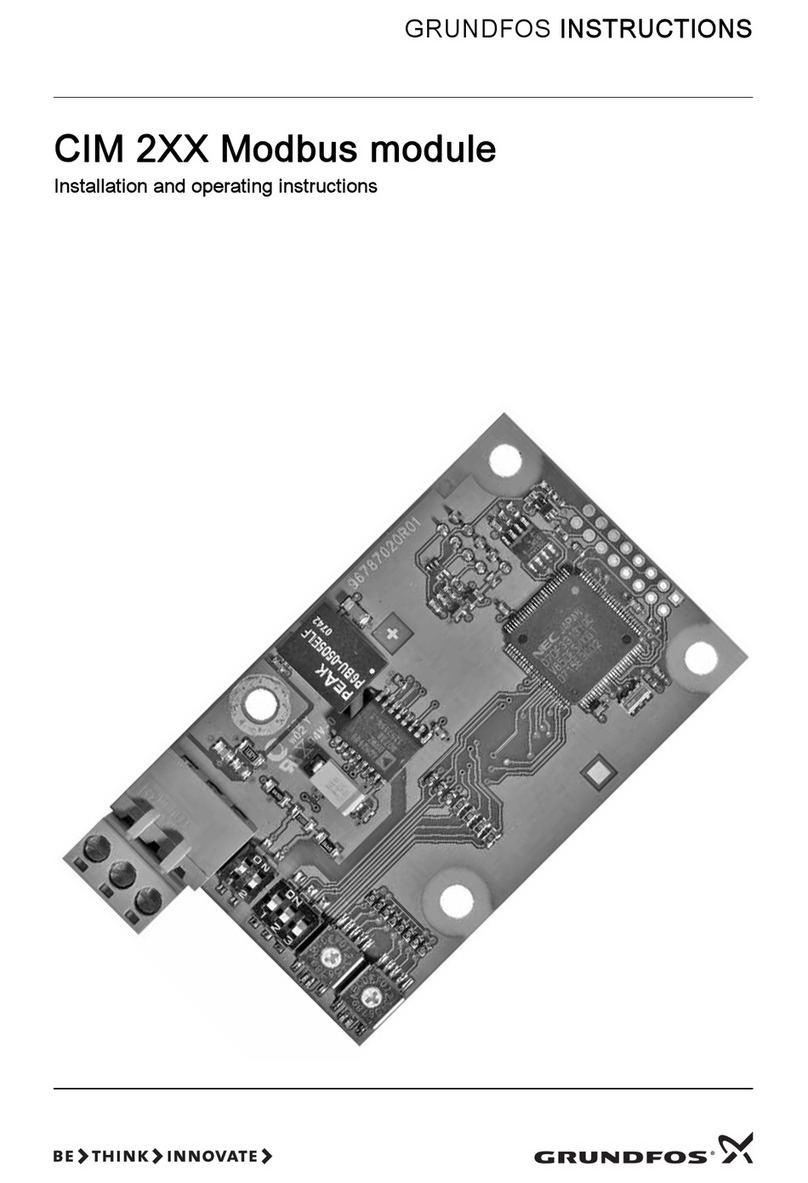
Grundfos
Grundfos CIM 2 Series Installation and operating instructions
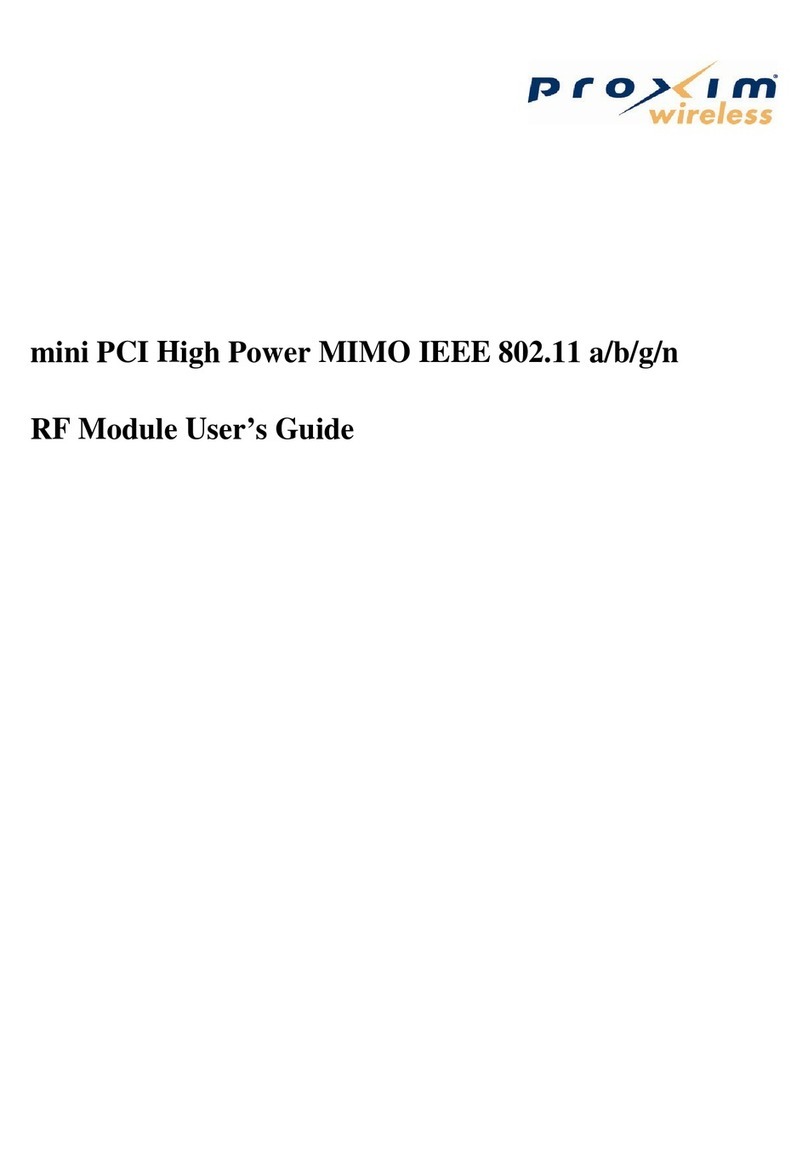
Proxim
Proxim HZB-PROXMB92 user guide
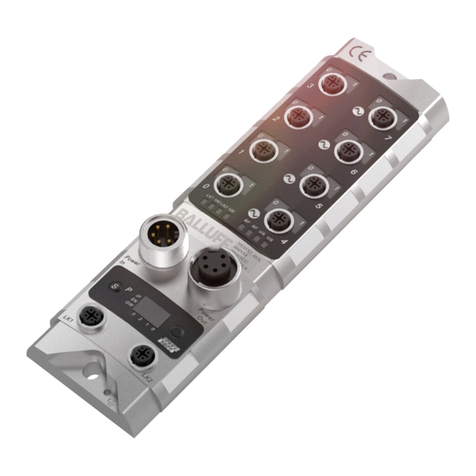
Balluff
Balluff BNI PNT-502-102-Z015 user guide
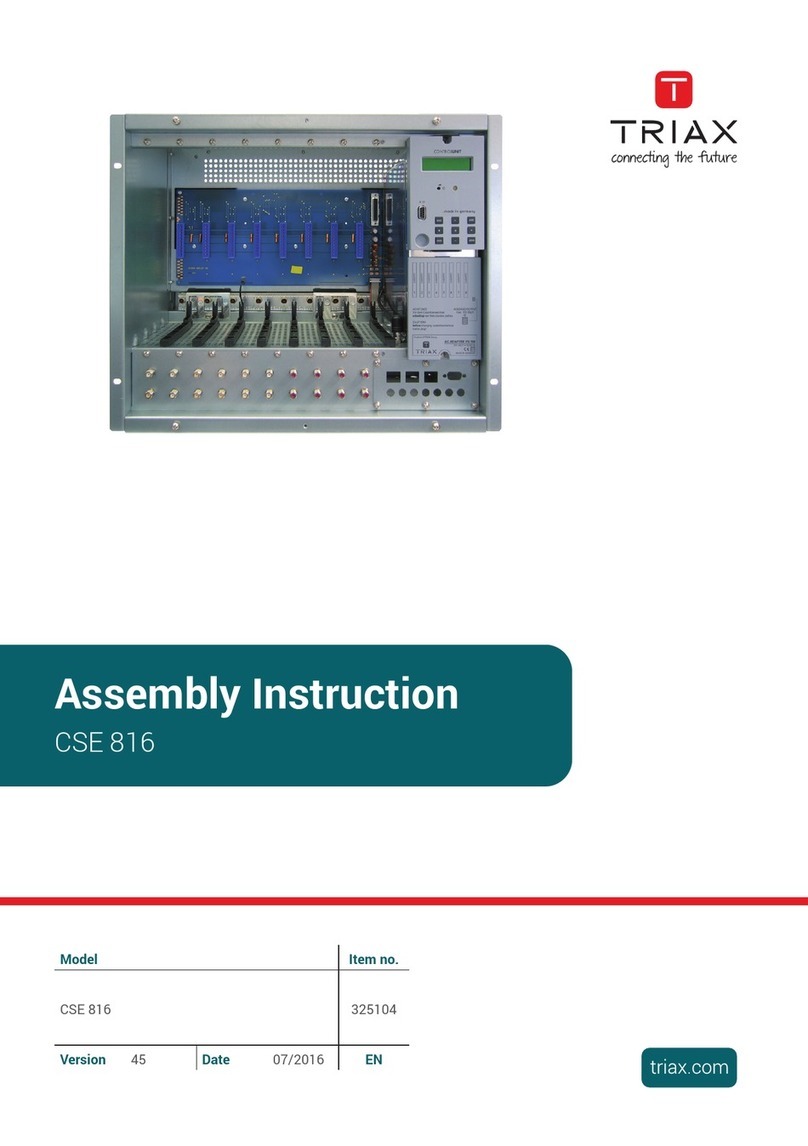
Triax
Triax CSE 816 Assembly instruction

